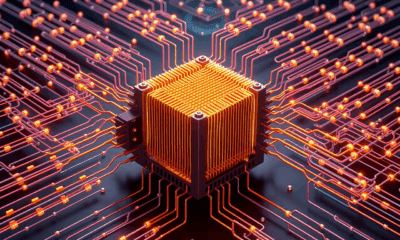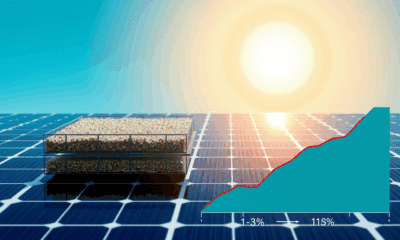While we try to keep things accurate, this content is part of an ongoing experiment and may not always be reliable.
Please double-check important details — we’re not responsible for how the information is used.
Computers & Math
“Scientists Merge Two ‘Impossible’ Materials into New Quantum Structure”
An international team has merged two lab-synthesized materials into a synthetic quantum structure once thought impossible to exist and produced an exotic structure expected to provide insights that could lead to new materials at the core of quantum computing.

Computer Modeling
Scientists Crack Code to Simulate Quantum Computations, Paving Way for Robust Quantum Computers
A multinational team has cracked a long-standing barrier to reliable quantum computing by inventing an algorithm that lets ordinary computers faithfully mimic a fault-tolerant quantum circuit built on the notoriously tricky GKP bosonic code, promising a crucial test-bed for future quantum hardware.
Computers & Math
Quantum Computers Just Beat Classical Ones – Exponentially and Unconditionally
A research team has achieved the holy grail of quantum computing: an exponential speedup that’s unconditional. By using clever error correction and IBM’s powerful 127-qubit processors, they tackled a variation of Simon’s problem, showing quantum machines are now breaking free from classical limitations, for real.
Computational Biology
A Quantum Leap Forward – New Amplifier Boosts Efficiency of Quantum Computers 10x
Chalmers engineers built a pulse-driven qubit amplifier that’s ten times more efficient, stays cool, and safeguards quantum states—key for bigger, better quantum machines.
-

 Detectors3 months ago
Detectors3 months agoA New Horizon for Vision: How Gold Nanoparticles May Restore People’s Sight
-

 Earth & Climate4 months ago
Earth & Climate4 months agoRetiring Abroad Can Be Lonely Business
-

 Cancer3 months ago
Cancer3 months agoRevolutionizing Quantum Communication: Direct Connections Between Multiple Processors
-

 Agriculture and Food4 months ago
Agriculture and Food4 months ago“A Sustainable Solution: Researchers Create Hybrid Cheese with 25% Pea Protein”
-

 Diseases and Conditions4 months ago
Diseases and Conditions4 months agoReducing Falls Among Elderly Women with Polypharmacy through Exercise Intervention
-

 Albert Einstein4 months ago
Albert Einstein4 months agoHarnessing Water Waves: A Breakthrough in Controlling Floating Objects
-

 Earth & Climate3 months ago
Earth & Climate3 months agoHousehold Electricity Three Times More Expensive Than Upcoming ‘Eco-Friendly’ Aviation E-Fuels, Study Reveals
-

 Chemistry3 months ago
Chemistry3 months ago“Unveiling Hidden Patterns: A New Twist on Interference Phenomena”





























